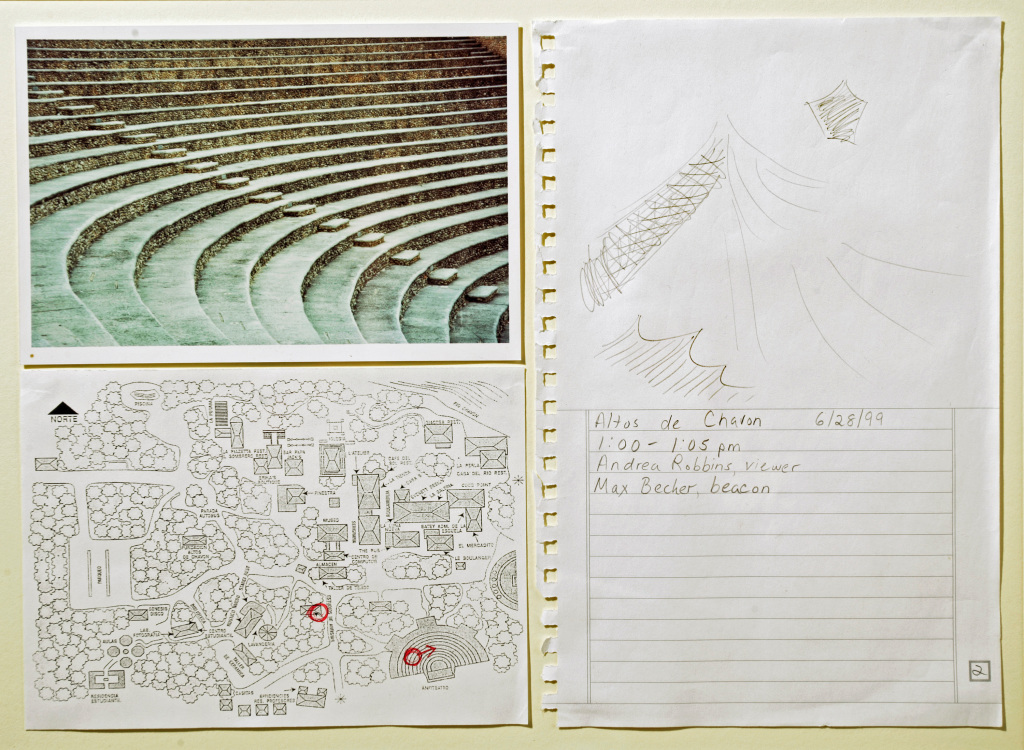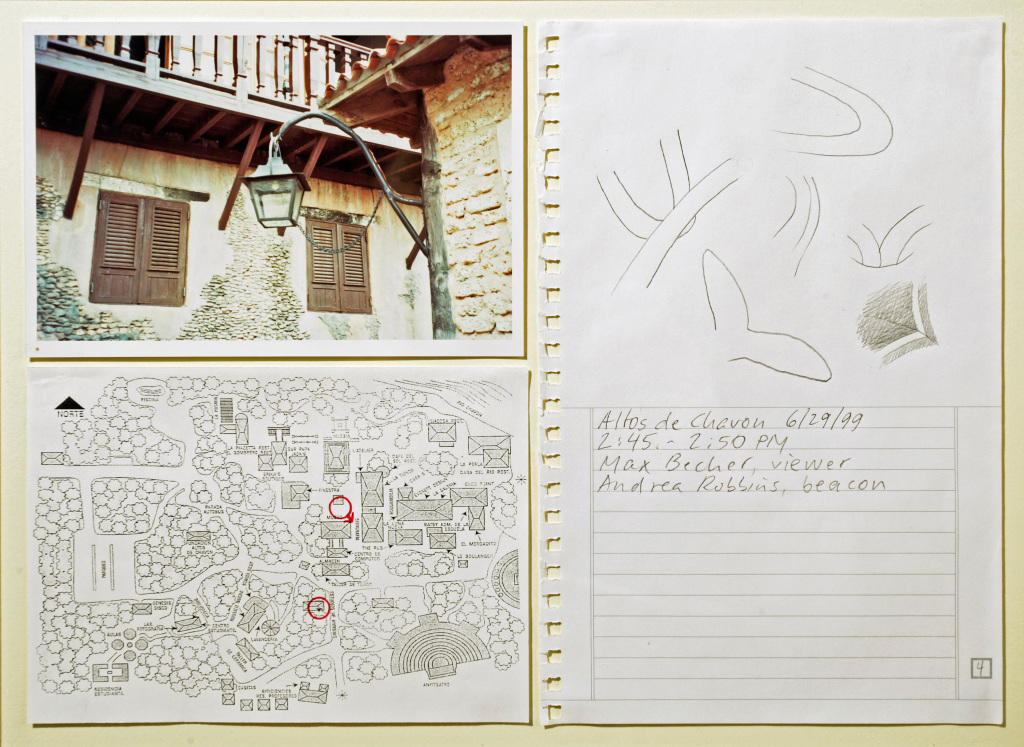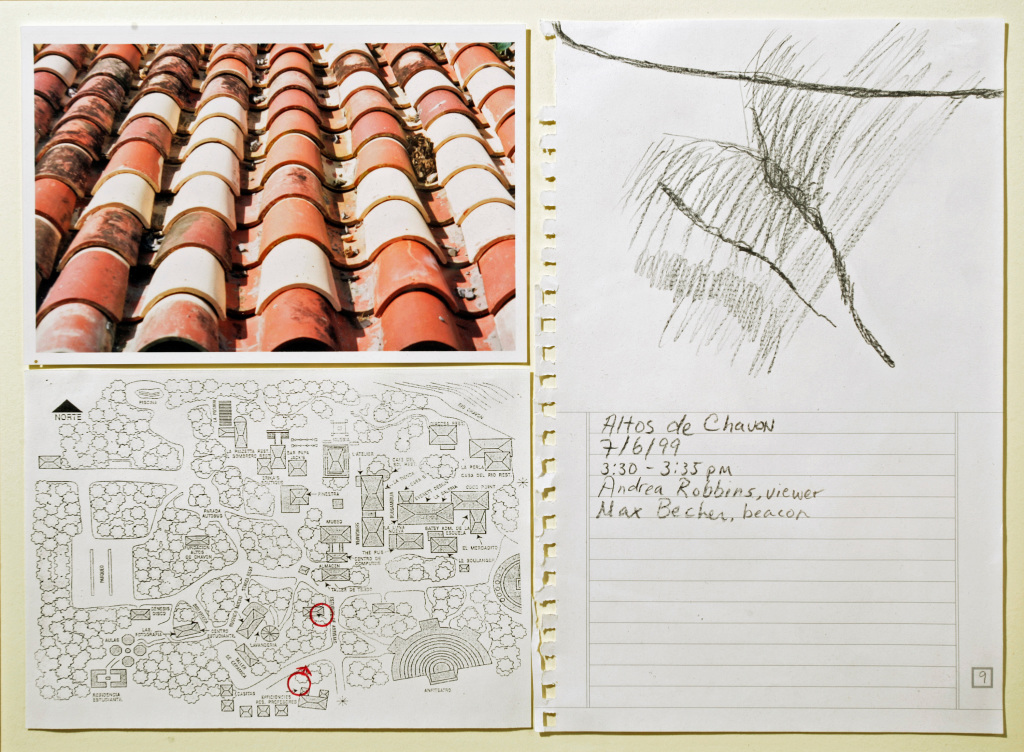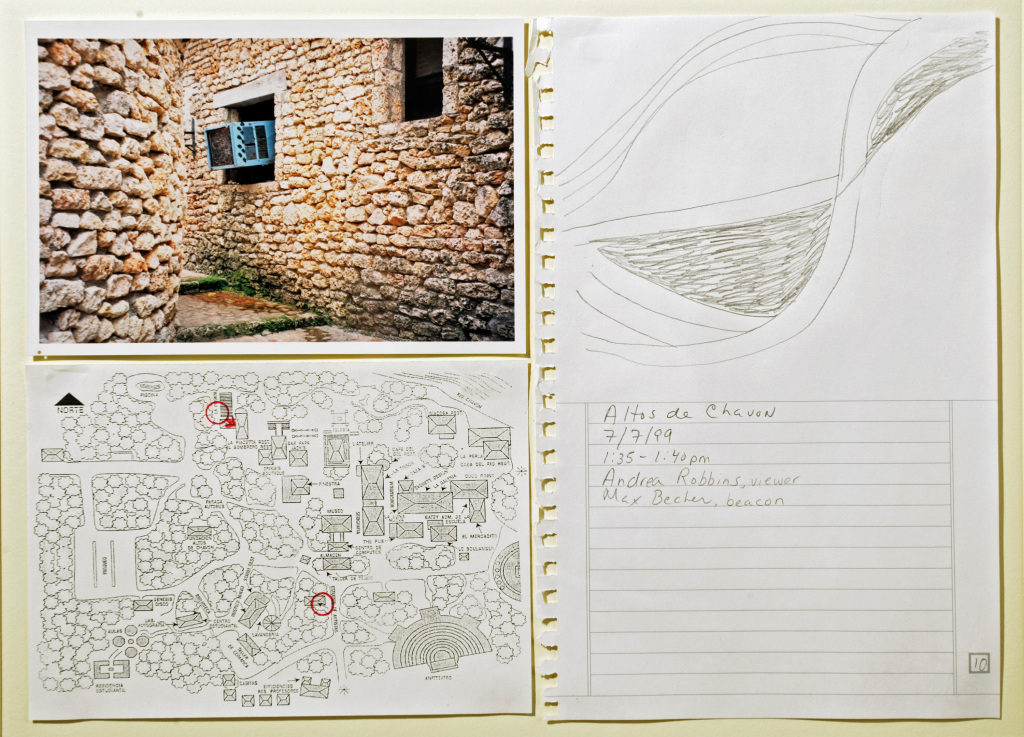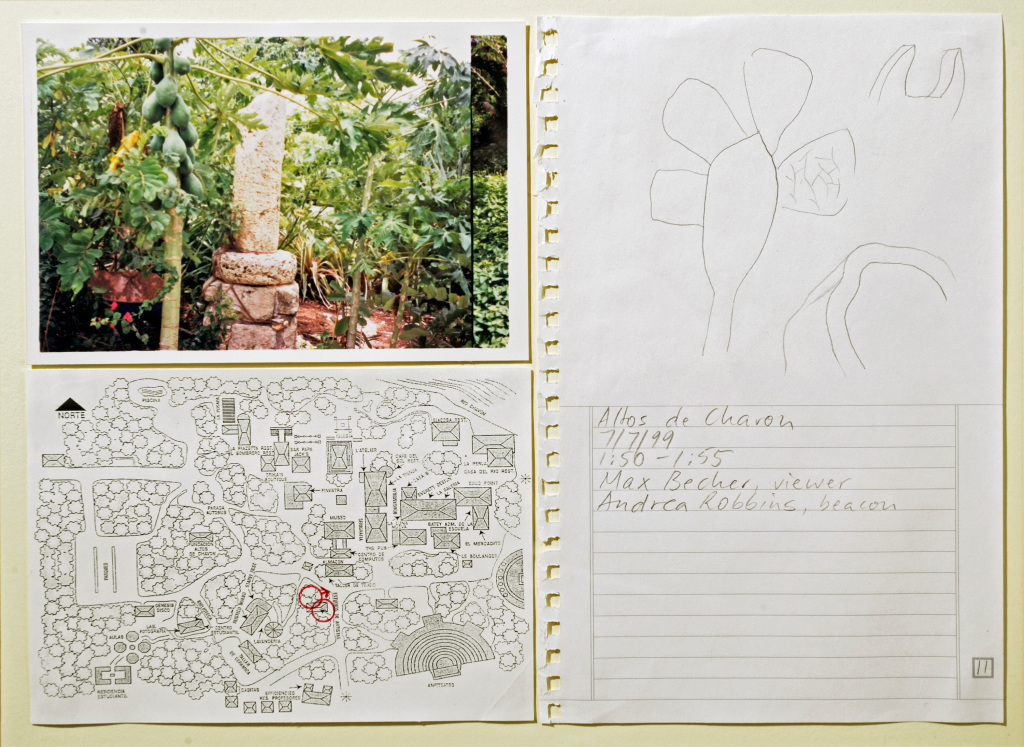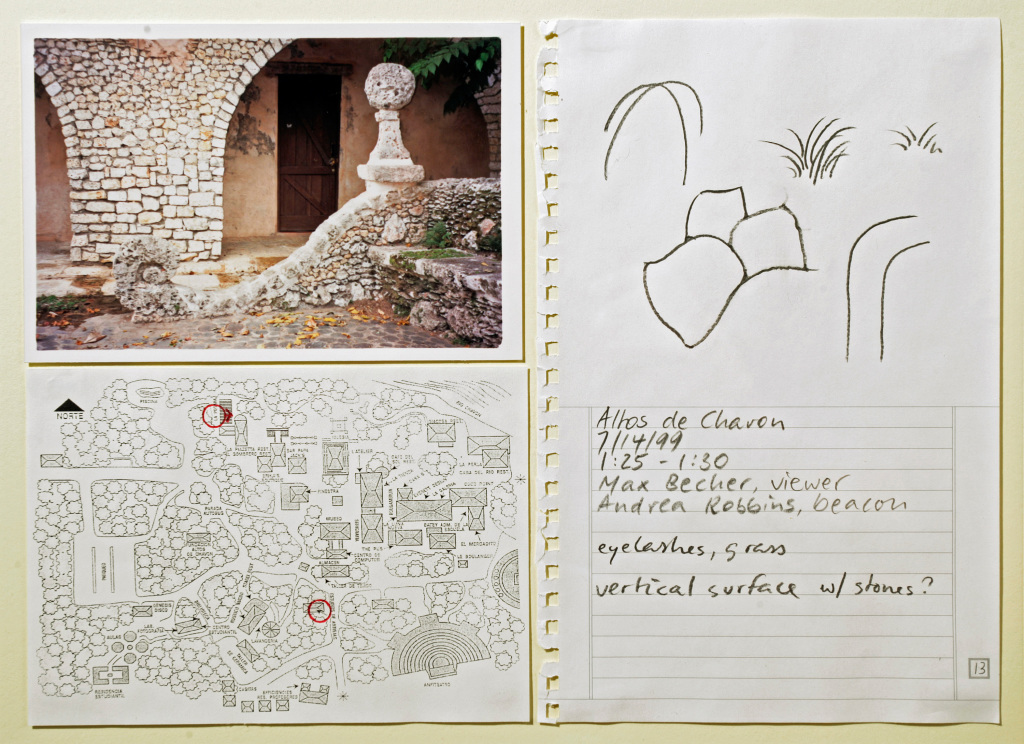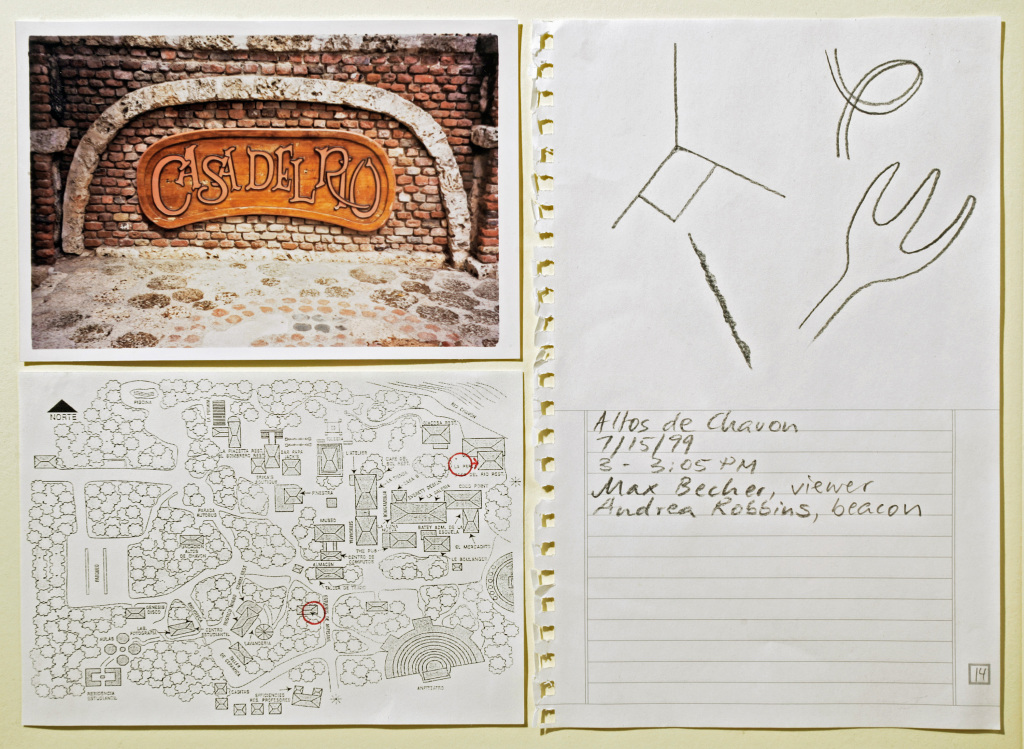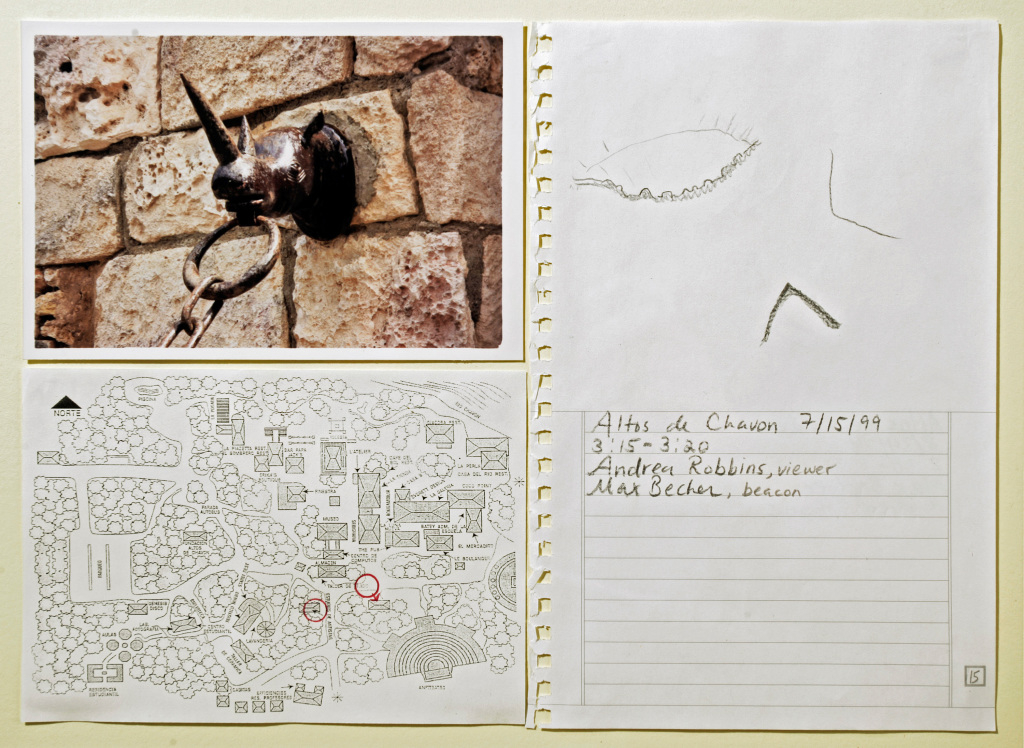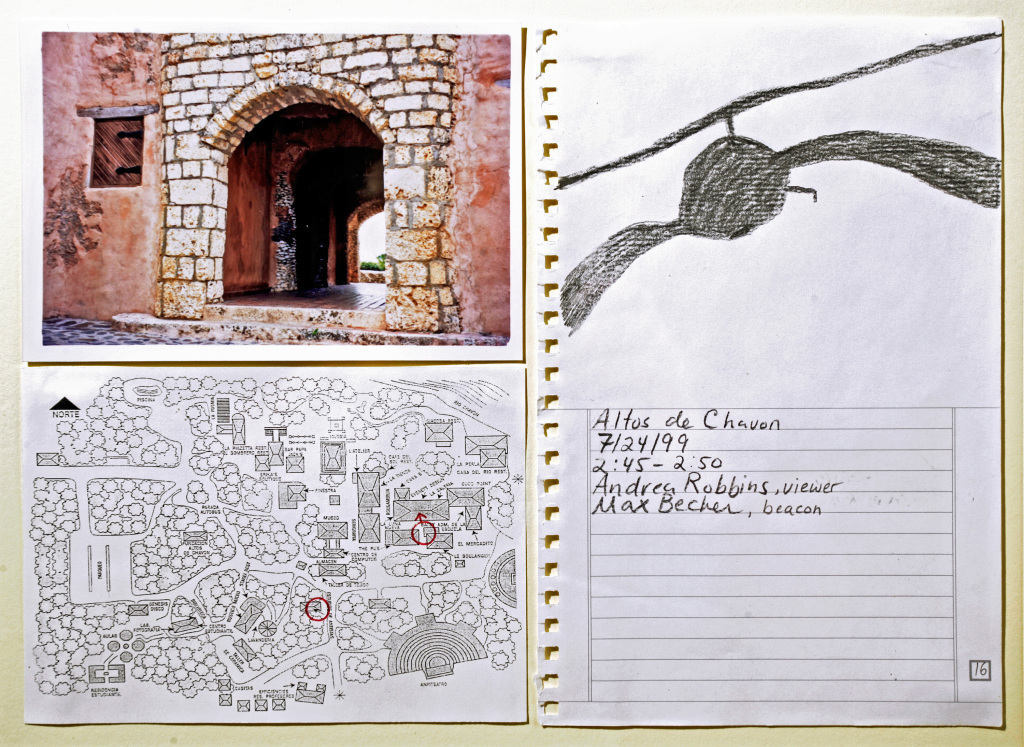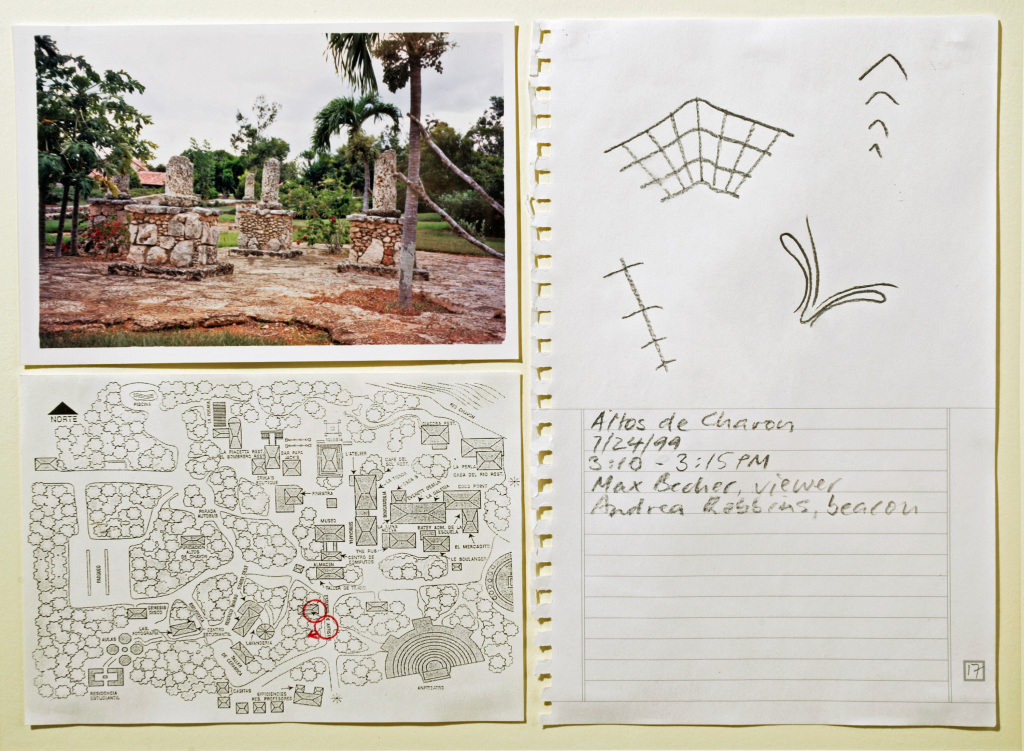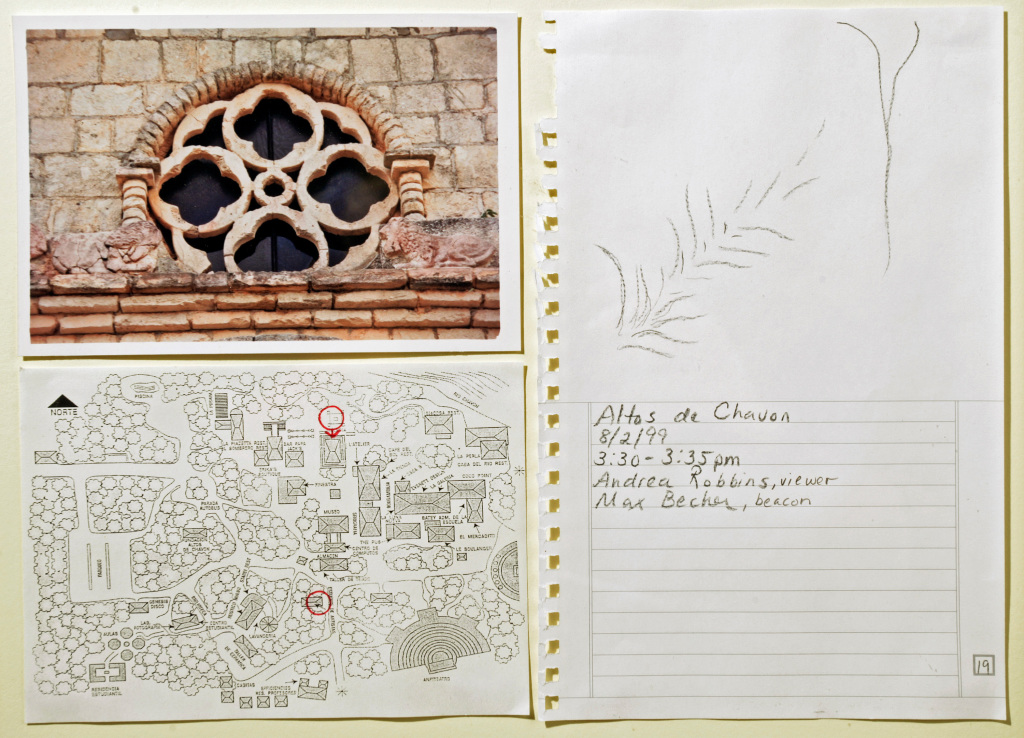


Remotely Viewed
During an artist residency at Altos de Chavon, an art school located in a mock mediterranean village in the Dominican Republic, we conducted an experiment in remote viewing, i.e. telepathy.
Remote viewing is the process of mentally seeing or sensing an unknown remote location. The term was coined in the early seventies by researchers at Stanford Research Institute, who conducted many purportedly successful experiments. Although claims of successful telepathic visions go back to ancient times, scientific studies have only existed for the last two centuries. During the cold war universities, governments and corporations competed in research to find alternatives to conventional spying and photographic reconnaissance. One of many government and corporate applications was the US Pentagon’s Project Stargate, which covertly refined and applied Stanford’s remote viewing techniques for more than twenty years.
Skeptics assert that many experiments are flawed or that the results are statistically insignificant. Since the notion of remote viewing defies current scientific models and is often difficult to quantify, they believe that such research is most likely a waste of time and money.
We held twenty controlled remote viewing sessions (one session’s results had to be discarded due to a timing error). Each session lasted five minutes. One of us (the beacon) was at a location trying to mentally “send” visual cues to the other person (the viewer), who was out of view in a pre-selected room. Only the beacon knew the exact location and for verification took a snapshot of it, while the viewer tried to visualize and render on paper any possibly relevant impressions. We took turns as beacon and viewer. On the map, the plain red circle indicates the location of the viewer (always in the same pre-selected room), and the circle with arrow indicates the location, line of sight of the beacon, and the direction in which the photo was taken.
Andrea Robbins and Max Becher 1999

